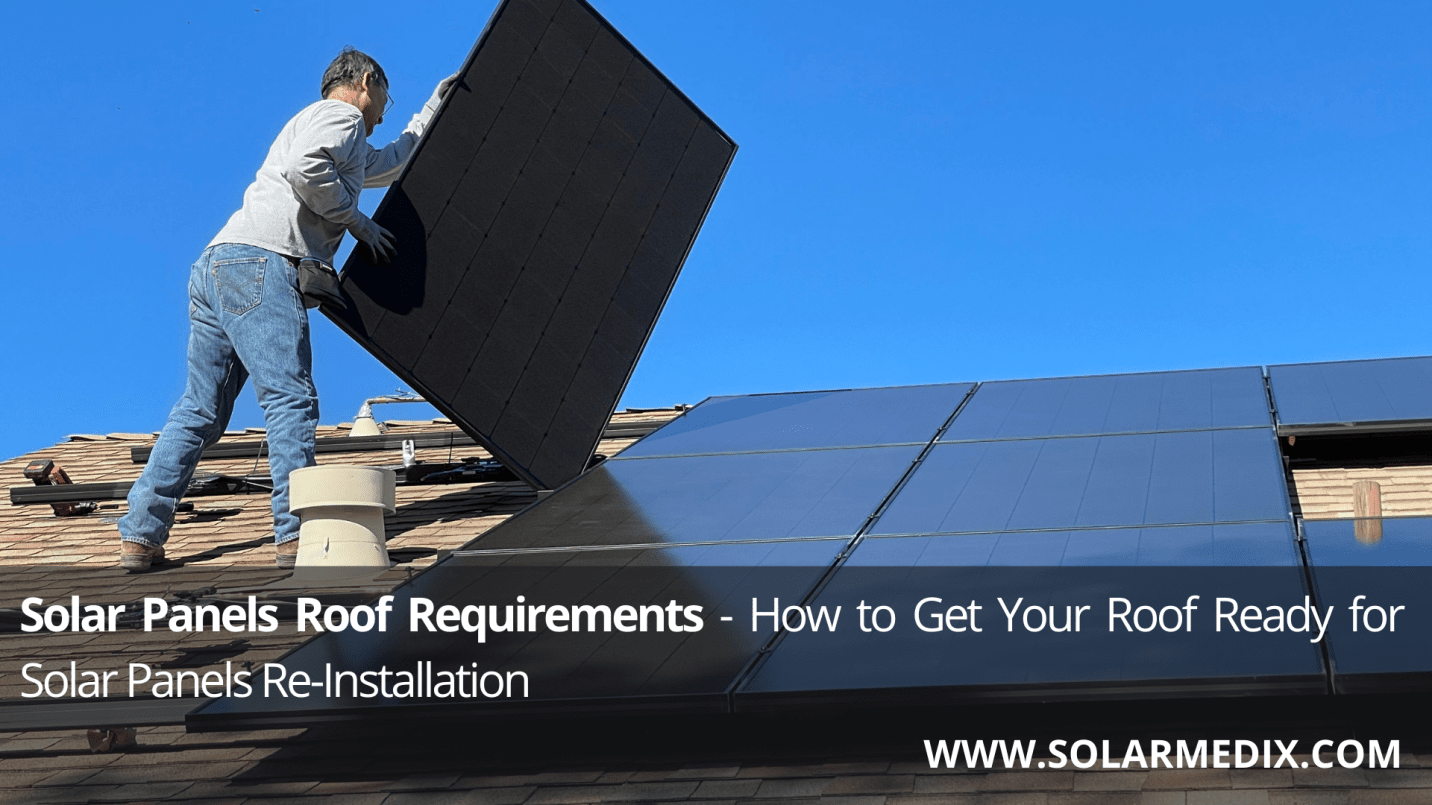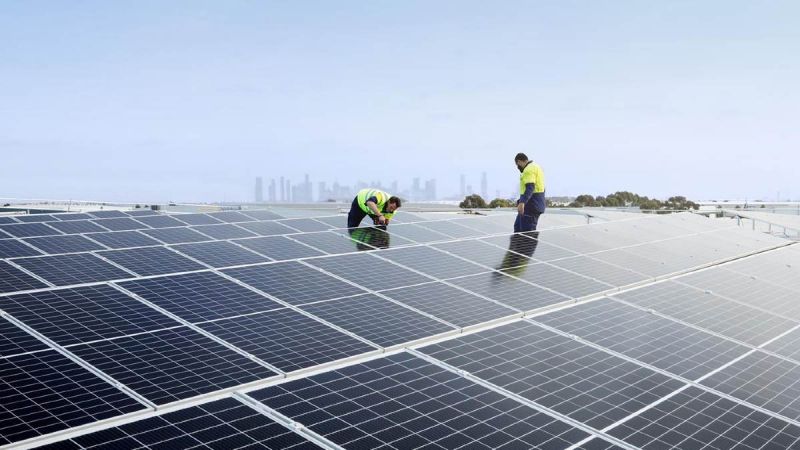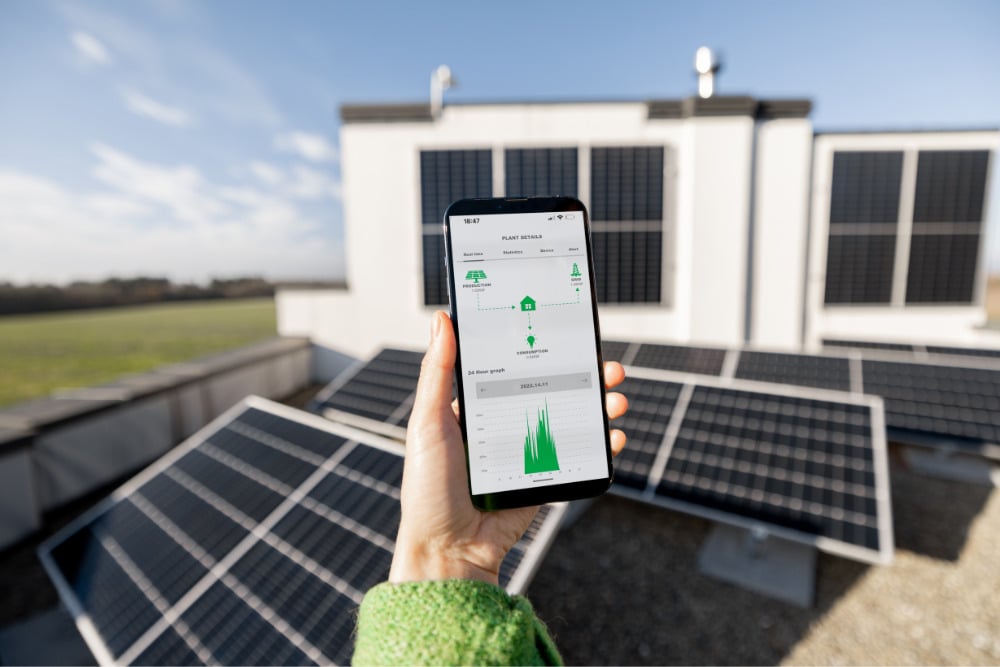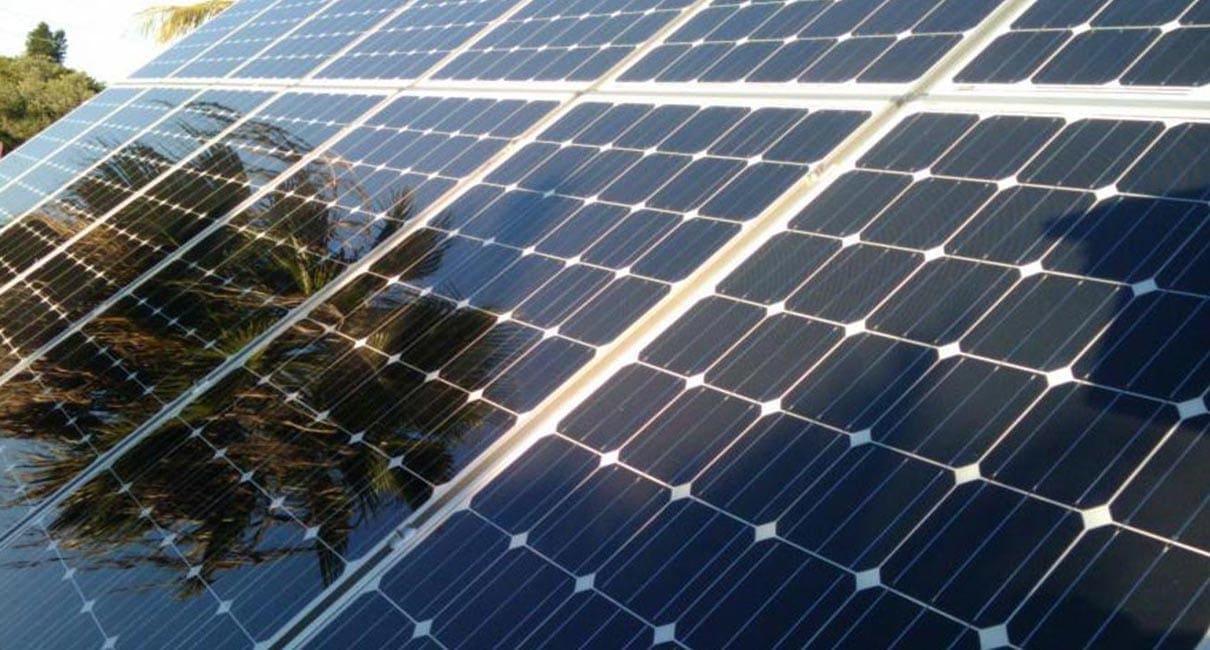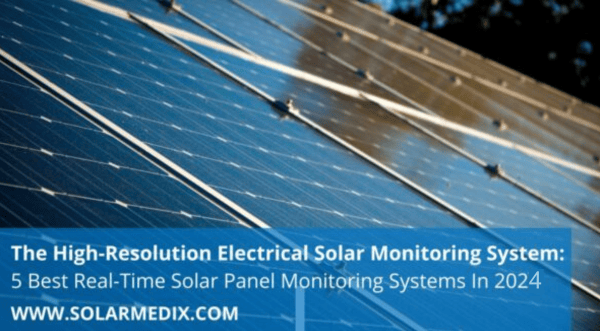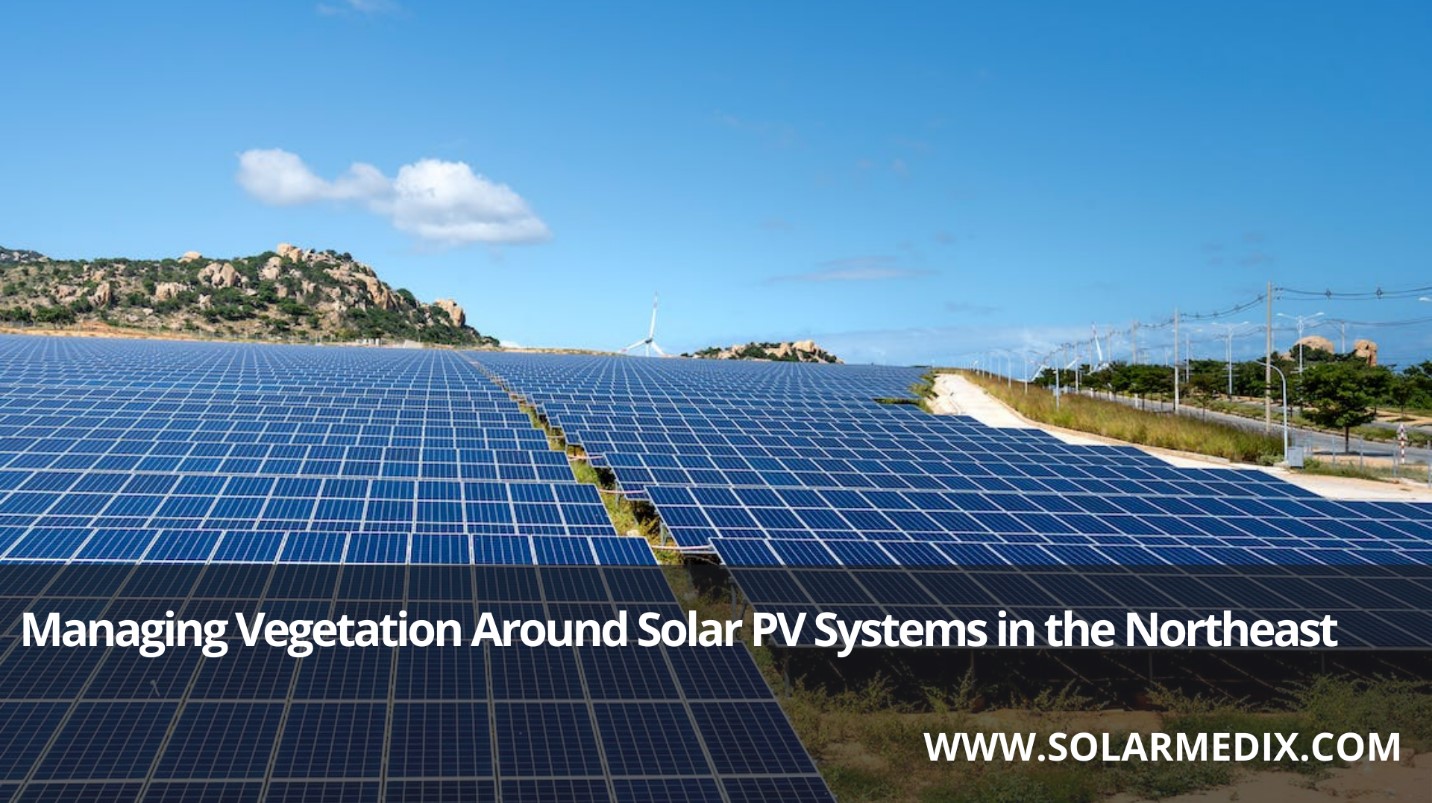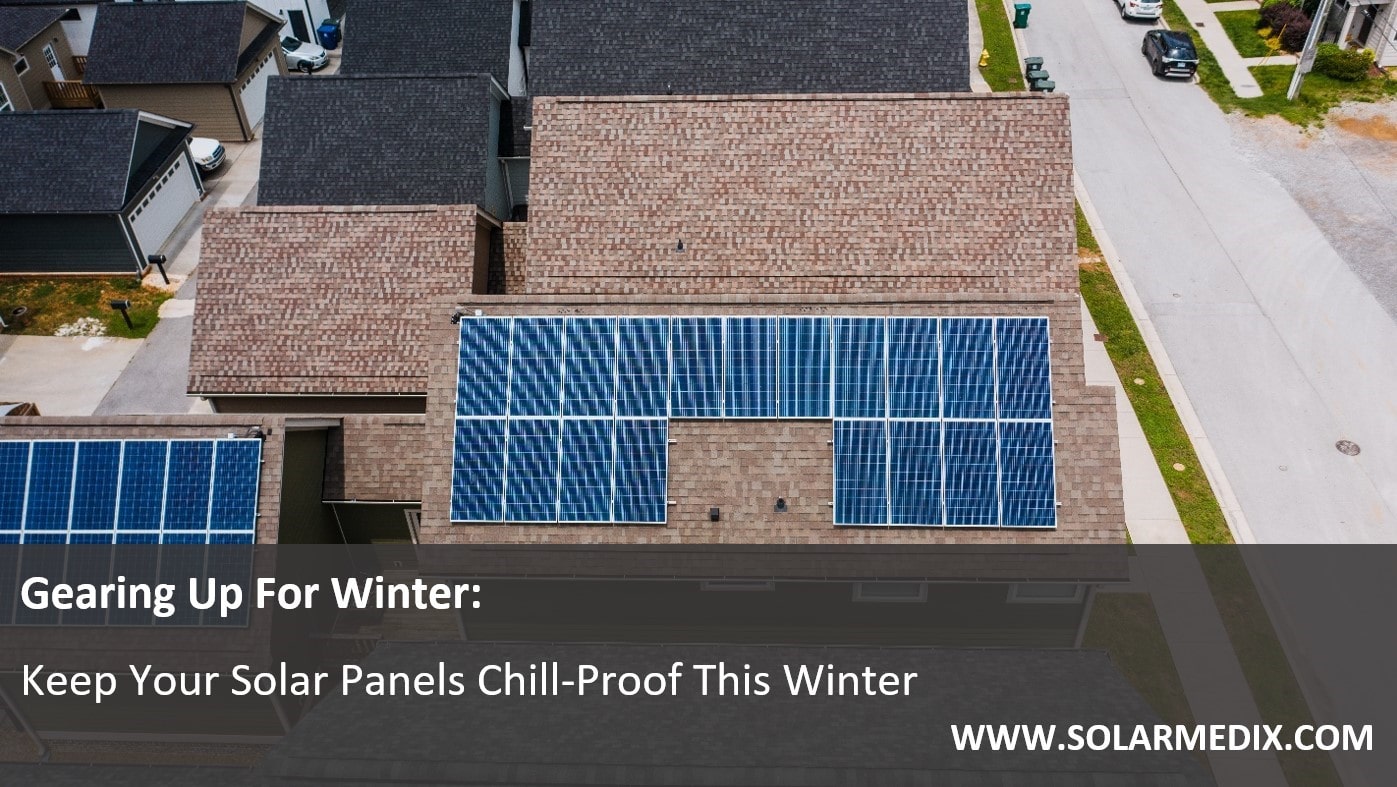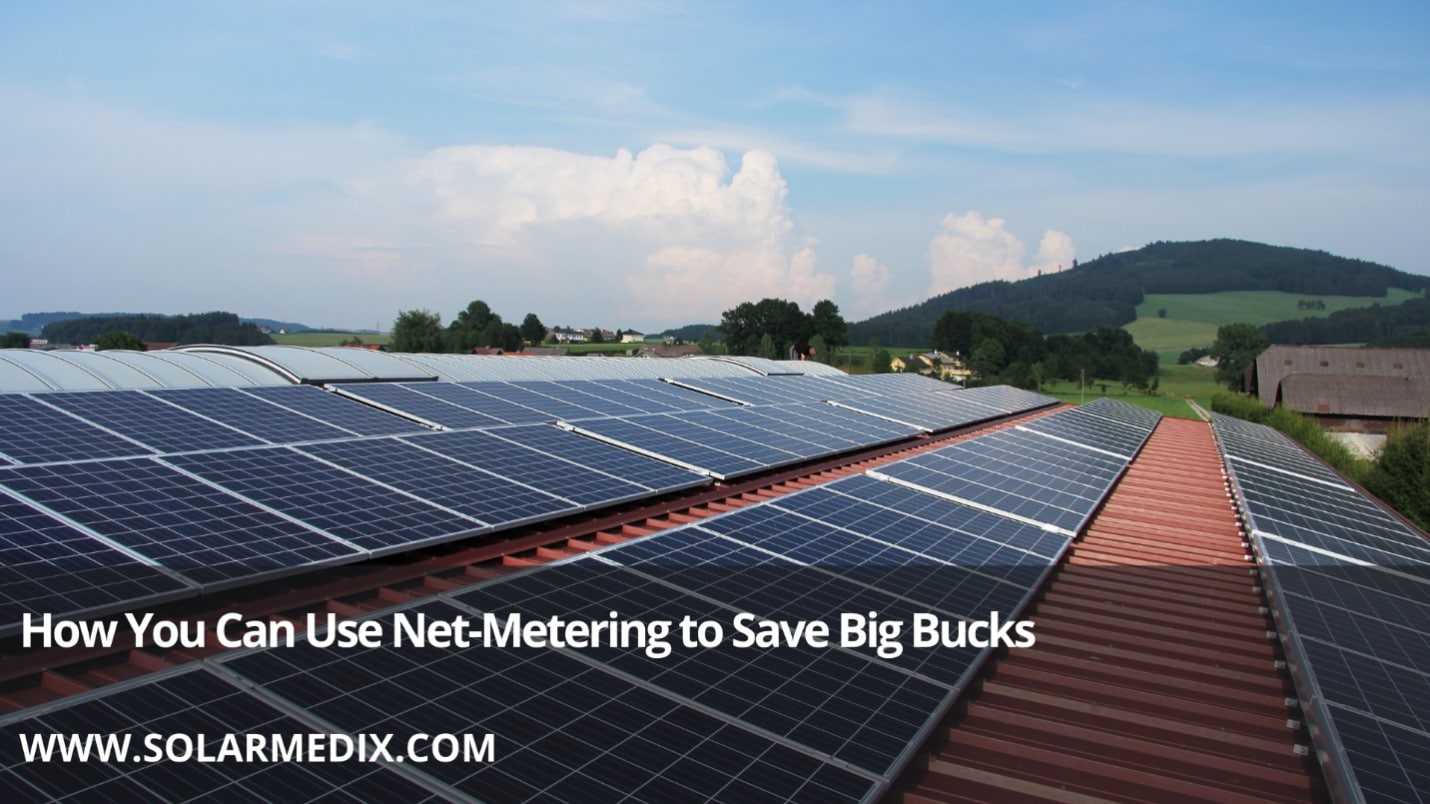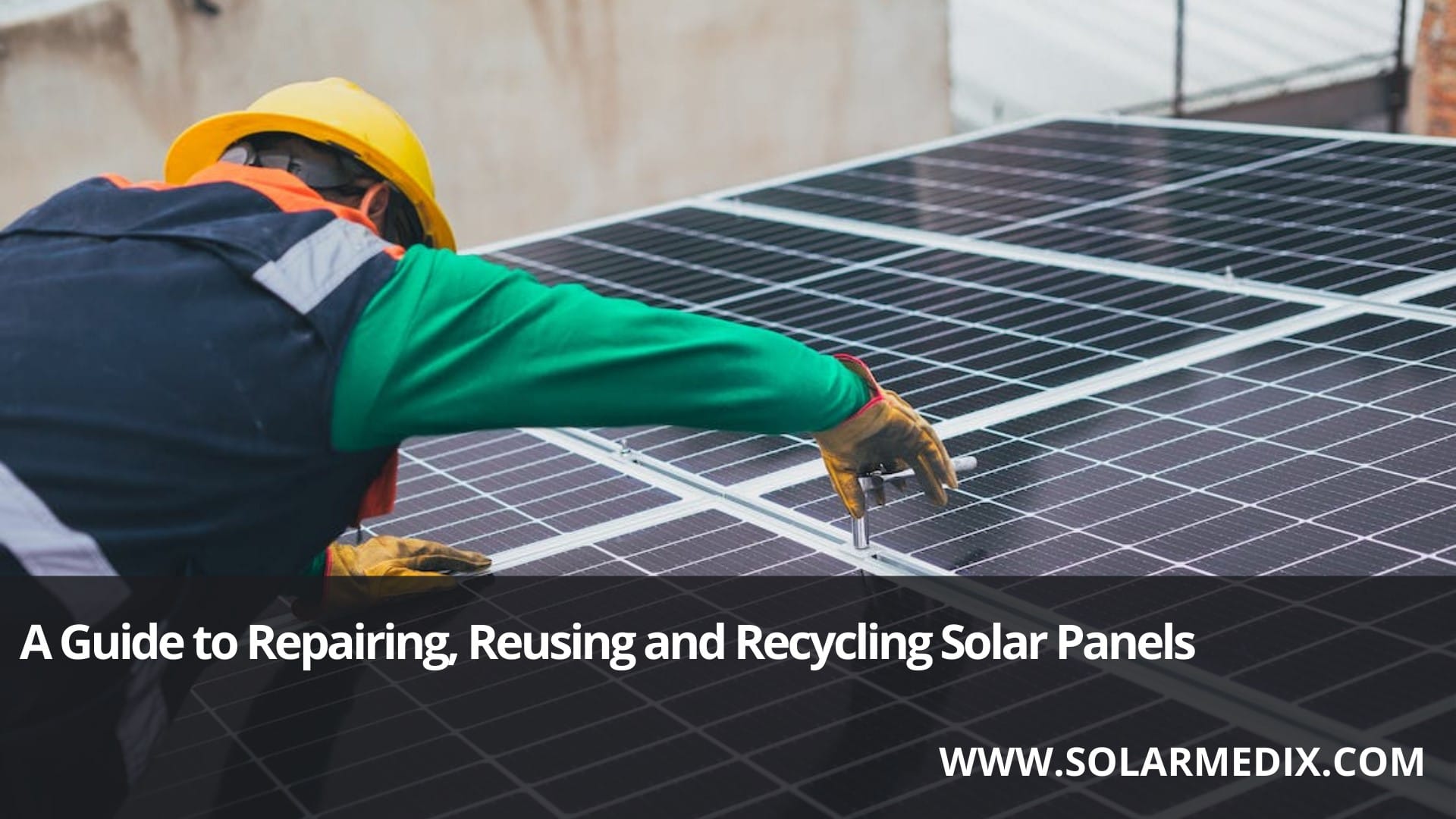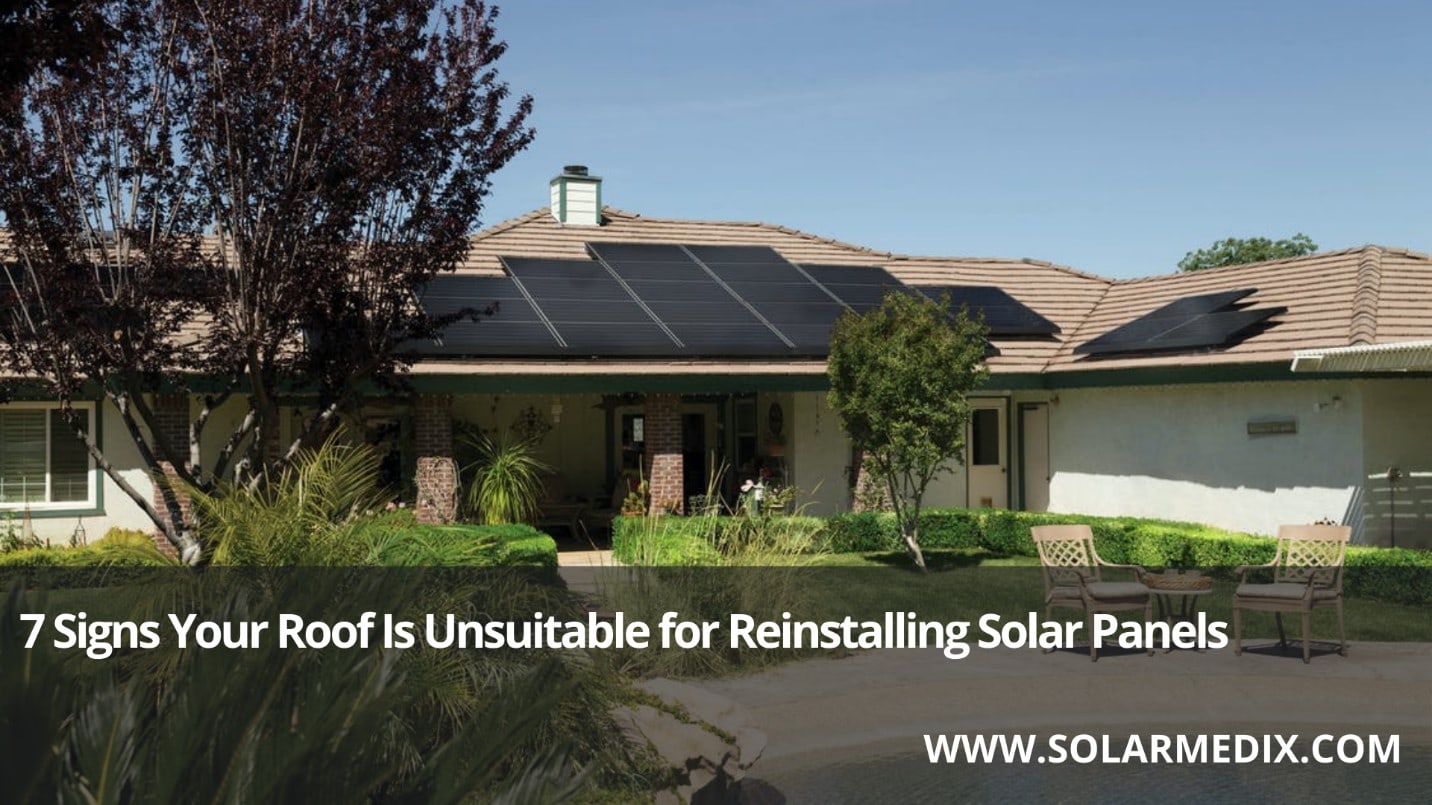If you had solar panels installed on your home a while back and since removed, it might be the right time to consider putting them back up. After all — with the cost of electricity continuing to rise, your solar panels will help with the additional household expenses that are coming up. However, they are less efficient if not adequately installed onto a clean, unscratched roof. That is why reinstallation is a great time to look at the condition of the roof and some improvements you can make to get the best possible installation experience.
If you need to reinstall solar, it is a good idea to get your roof ready for the imminent work that is bound to happen. The last thing you would want is for the panels to become misaligned, or for their connections to have loosened over time. This blog post will outline everything that needs to be done to prepare your roof before you commit to adding solar panels.
Solar Roofs: The Hidden Benefit
The most obvious reason to install solar panels on your roof is to save money. Using the energy you produce can cut your electric bill in half and give you a return on your investment in as little as five years.
But there are other reasons why a solar panel installation makes sense. Here is why roofs are great places for solar panels.
You Are Using Space That Would Otherwise Be Wasted
Roofs are usually the best location for solar panels because they are already exposed to sunlight and have easy access to electrical wiring. Other surfaces that can be used include poles and walls, but these may require more effort and money to mount panels on than a simple roof installation.
They Are out of the Way
Roofs are usually the highest point on a home, which makes them ideal locations for solar panels because they provide maximum exposure to sunlight and minimal interference from trees or other objects blocking their path as it travels toward Earth’s surface. They are also out of sight for most people, so you do not have to worry about ruining your curb appeal if you install them there. But if you have an older house with low ceilings or a flat roof, it might be challenging to find space for them without taking up valuable living space inside.
Determining Solar Panel Roof Requirements
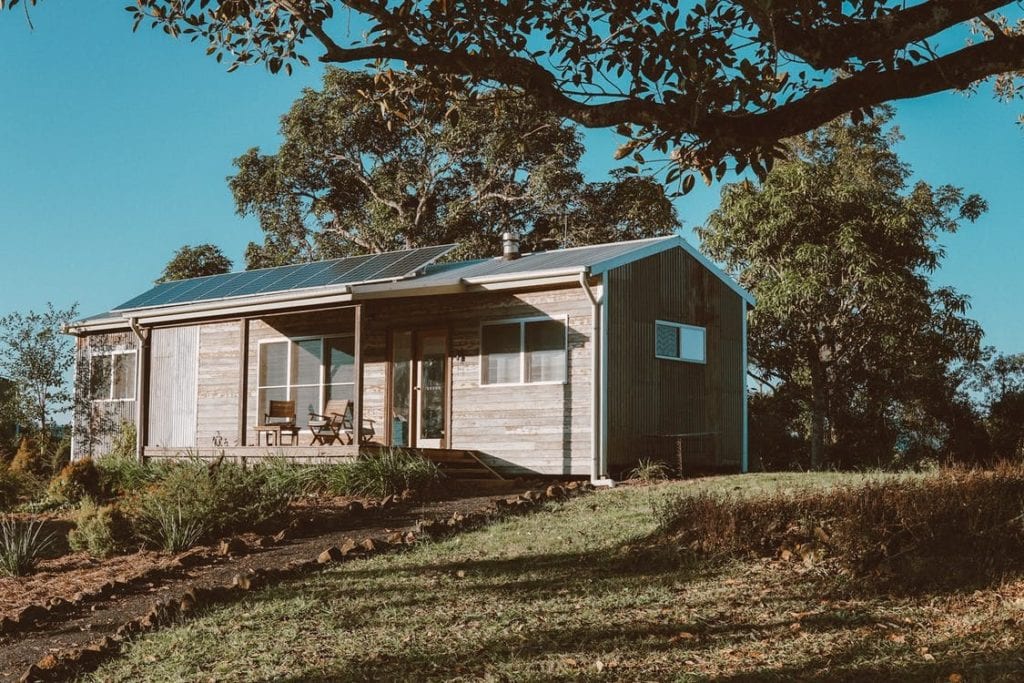
Whether it is just replacing shingles or re-doing the entire thing, here are a quick couple of tips and tricks to help get your roof ready for those solar panels to be put back on.
Inspect the Age of Your Roof
The first step to preparing your roof for solar panel installation is to assess the roof’s age. If the top is older than 20 years old, then chances are that it will need to be replaced before installing solar panels on it. This is because older roofs tend not to hold up well under heavy loads like those from large pieces of equipment like rooftop solar panels. However, many roofs last longer than 20 years, so it is vital to inspect them before you decide to repair or replace them.
The first step when inspecting your roof is to check for leaks. If you have water seeping through the shingles or other signs of leaks, you will want to call a professional roofer as soon as possible. Even if the leak is not urgent, it is best to get it taken care of before installing solar panels so that you do not end up with additional damage down the road. In some cases, you may even be able to deduct some of the cost from your taxes if you have a leaky roof repaired before installing new technologies like solar panels or geothermal heat pumps.
Next, check out any damage caused by gutter issues or previous hailstorms. If there are areas where shingles are missing or cracked, they would not be able to sustain heavy winds during an installation process — which could lead to damage during installation or even structural problems later down the line when the wind blows hard enough against them.
If any of these problems exist, they must be repaired before installing solar panels on top of your home’s roofline.
Determine the Angle of Inclination of Your Roof
When it comes to solar panels, one of the most important considerations is the angle of inclination of your roof. The inclination angle refers to how much the roof slopes away from vertical. If your roof is perfectly flat, then it has zero degrees of inclination. If it slopes down towards the back, then it has a negative degree of inclination, and if it slopes up towards the front, then it has a positive degree of inclination.
Roofs that are sloped at an angle of fewer than 20 degrees will not be able to support solar panels adequately. If your roof is inclined at more than 30 degrees, it may be too steep for installing solar panels. The best angle for installation is between 25 and 30 degrees
Another factor to consider when choosing an angle is whether or not any obstructions could block sunlight from reaching your home or business. If you live in an urban area where there are high-rise buildings around you or if you have trees blocking the sun from reaching your house during certain parts of the day, then you might want to consider getting an electrician to come out and adjust your panels so that they can catch more sun throughout the day.
Ensure Easy Access to the Roof for Emergencies
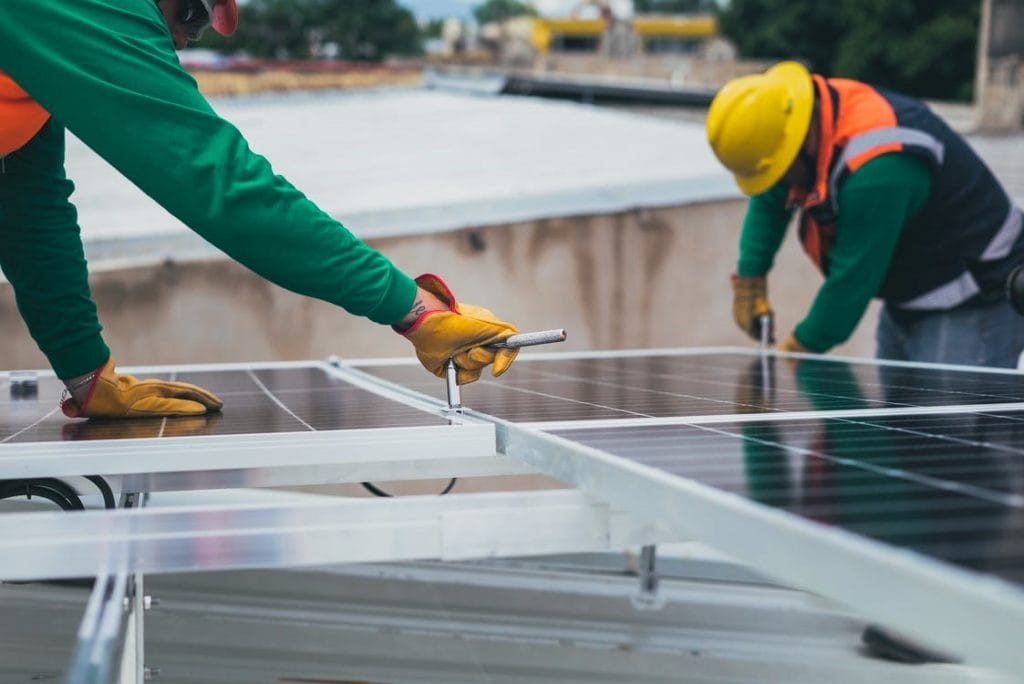
The panels themselves are heavy and can be slippery when wet. If there is ever a fire or other emergency, firefighters need to be able to get up there quickly and safely without having to worry about slipping off the roof. Firefighters also need access to anything that could become dangerous if it gets hot or catches fire. This includes things like vents, chimneys, or even air conditioners. Make sure everything has been moved away from the edges of your roof so it does not block its way up there.
If there are any power lines near your house, ensure they are not touching the side of your home with solar panels installed on it – they can become live wires during storms and cause fires if they feel something metal.
Consider the Weight of the Solar Panels
Solar panels can weigh hundreds of pounds, and that weight may be too great for your roof to handle. If you have solar panels on your roof, you need to ensure that they will not cause damage to the structure of your home or cause an accident by falling off.
If the solar panels are heavy, you may need to replace your roof before installing them again. Consulting a contractor or engineer who knows about building materials and their abilities will be able to tell if your roof has enough strength to hold the weight of solar panels. They will limit how much weight your current roof can hold without undergoing any damage.
Our team at Solar Medix can offer this assistance to you.
However, if your current roof is old and dilapidated, it might not have enough strength for solar panels. This is because older roofs often have problems like curling shingles or missing tiles, making them weaker than modern roofs. If you have a metal roof, it may be able to support the weight of the panels, but it is still essential to check with a professional before installing new solar panels.
If you do not want to replace your entire roof, consider installing a new layer of plywood over top of the existing plywood boards. This will add extra support so there is less chance of damaging your home when installing new solar panels.
Measure the Area of Your Roof
Before you go ahead with the project, measure the area of your roof to ensure that it is large enough to accommodate the panels. You do not want to end up with too small of a space for them or an overly large one that would not be able to support all the equipment.
How to Measure Your Roof for Solar Panels
Measure the length and width of the roof from end to end. Be sure to measure from edge to edge — not just from peak to valley or peak to eaves. Add the two measurements together for overall size.
Measure the roof’s slope by finding a flat area near an outside corner. Use a measuring device such as a level or plumb bob. Place one end of your device against a wall at one corner and hold it vertically so that it touches both sides of the wall at once. Have someone else hold this position while you move over to another wall and repeat using another end of your tool. The difference between these two measurements is the pitch of your roof and can help determine if you can install solar panels on your home’s roof safely and effectively, as well as how many panels you may be able to fit on your property.
Check if Reinstalling Solar Panels Will Void the Roof Warranty
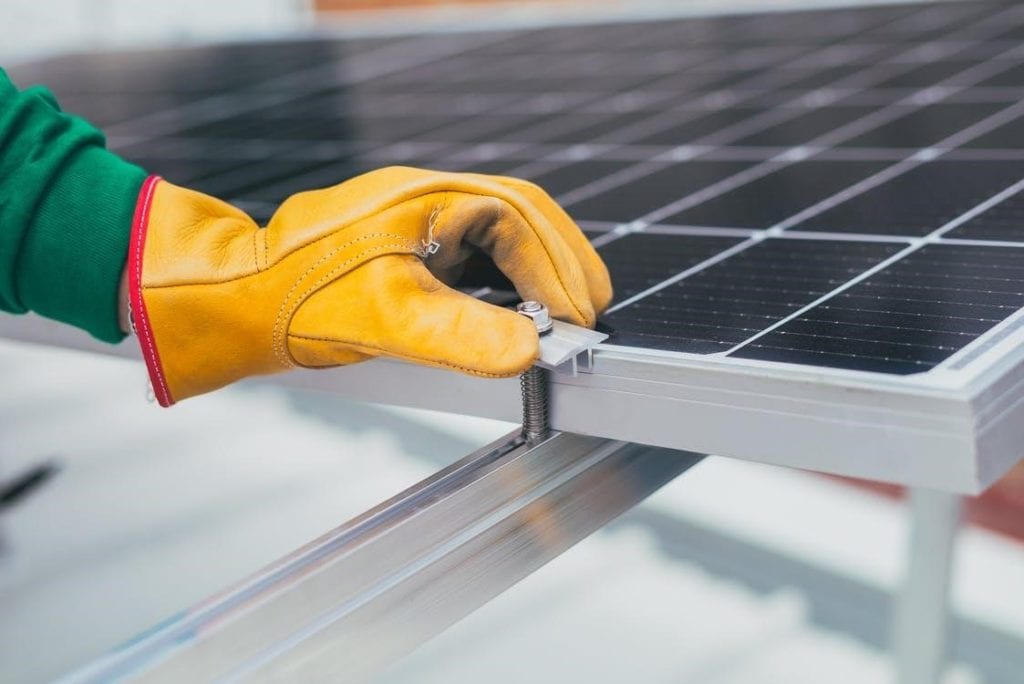
When planning to reinstall solar panels on a new roof, it is crucial to know how solar panel reinstallation will affect your roof warranty. If you are like most homeowners, you may not even think about checking with your roofer before signing up for solar panels. Some manufacturers have a warranty clause stating that you cannot install anything on top of their product.
First, check with your homeowner’s insurance company to see whether installing solar panels violates your roof’s warranty. The answer will vary by company, so it is worth checking before you start.
Next, feel free to contact our team so we can evaluate what needs to be done without voiding your warranties or insurance policy.
Handy Tips for Reinstalling Solar Panels on Your Roof
If you are getting ready to reinstall your solar panels, here are a few tips to help you get the most out of your solar panels on their reinstallation.
1. Clean your roof with soap and water before reinstallation.
2. Make sure that all old sealant has been removed from around the edges of the panels, or it will prevent the new ones from being installed in the exact location.
3. Make sure all electrical connections are secure, and if they have been disconnected for any reason, reconnect them before installing new panels. This is a crucial step because if one connection comes loose, it can cause problems with the operation of your system or even start a fire.
4. If you have had problems with rodents chewing on wires or cables, make sure that there is no access for them anywhere near where you are installing new panels; this includes under shingles and flashing as well as open spaces between rafters or joists in your attic space above your roof line where rats like to hide out.
The Bottom Line
Many homeowners are unsure of what specific roof requirements are necessary for a solar panel installation. There is more than meets the eye when getting your roof ready for solar panel installation. It is imperative that you have the proper roof pitch and structural support for your home.
Hopefully, by following our insights, your roof will be ready for solar panel reinstallation without issue, and if you follow our suggestions, you could save a lot of time and effort.
Our team at Solar Medix is ready to answer your questions and give you a no-obligation price quote. Feel free to call us at 732-785-4814 or book a consultation online. And we’ll get in touch within 24 hours.
